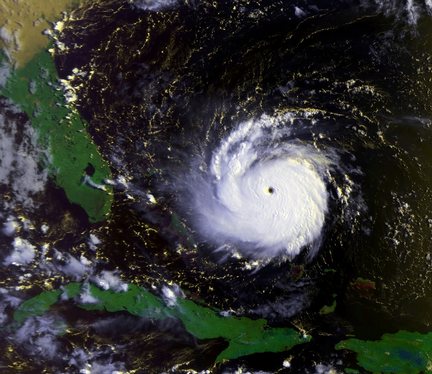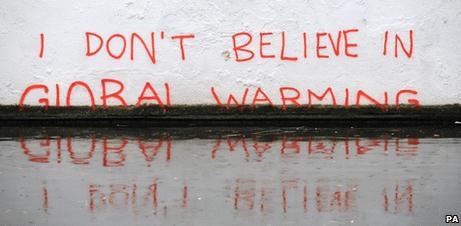76 F. high temperature yesterday in the Twin Cities.
80 F. average high on August 22.
83 F. maximum temperature on August 22, 2016.
August 23, 1955: Hail in Houston County results in drifts up to a foot deep at Rushmore.
U.S. taxpayers spend about $15 every year for the privilege of having a state-of-the-art National Weather Service; arguably the best on the planet. We can debate which weather model is doing the best job, but when it comes to warning citizens of life-threatening weather, nobody does in better than NOAA.


25 Years After Hurricane Andrew: Are We Prepared for Another Category 5 Storm? The short answer is no. Here’s an excerpt with more perspective from AccuWeather: “…One of the biggest remaining issues is the lack of concern among those who haven’t experienced a major hurricane in years, or ever. Ignoring evacuation orders, lack of proper preparation and throwing “hurricane parties” are all potentially dangerous forms of complacency. “People really need to understand that we as meteorologists don’t think we have all the answers,” said Bill Kirk, CEO of Weather Trends International. “We have great technology, but these beasts have a mind of their own, and we need to take them seriously.” Rise in coastal development also places more lives at risk in the event of another major storm. “The challenge is to make sure people heed the advice and prepare, because those forecasts aren’t perfect,” said Brown. “The risk is too great.”
File image: NASA.
August Sweatshirts. Good sleeping weather? Yep. Highs reach the 70s with lows dipping into the 50s in coming days; and there’s a good chance much of Minnesota won’t climb out of the 60s this weekend. Twin Cities ECMWF numbers: WeatherBell.
Don’t Write Summer Off Just Yet. 500mb forecast winds on September 5 show a lingering ridge of high pressure pumping warmer than average temperatures across the far west into the Plains, Midwest and Ohio Valley. In spite of recent puffs of Canadian air I’m starting to believe September may wind up on the warm side again.
Escaping One of the Nation’s Worst Environmental Disaster Zones. As is often the case, the poor are first to be impacted by the ravages of pollution. The Washington Post reports: “…In May 2016, Turner unknowingly moved her family into one of the nation’s worst environmental disaster zones. Last summer, shocked residents in the public housing complex called West Calumet were told that the soil in their yards had been contaminated for decades. In some places, the lead in the dirt measured 228 times the maximum level considered safe. Subsequent blood tests found that 18 out of 94 children younger than 6, the age group most at risk, had elevated lead levels. Then officials tested the water and discovered that it, too, contained lead, raising concerns that East Chicago was becoming the next Flint, but worse. Vice President Pence was governor of Indiana at the time of the announcement a year ago that the neighborhood was uninhabitable…”
From Tesla to Mercedes-Benz, Automakers Become Energy Companies. Ask Apple – it’s all about the ecosystem. GreenBiz explains: “Drive your electric car to your solar-powered home, plug it in to charge and enjoy the flexibility provided by the oversized battery parked in the driveway. It’s a long-sought environmental ideal, but one that may be getting closer to reality as automakers throw their technical expertise and deep pockets more directly into new ventures in the energy business. “This is the integrated future. You’ve got an electric car, a Powerwall and a Solar Roof. It’s pretty straightforward, really,” Tesla Motors founder Elon Musk explained to Fast Company at a model all-electric neighborhood earlier this summer. “[This] can solve the whole energy equation.” Aside from the union of Musk’s clean energy empire, with Tesla’s late 2016 acquisition of SolarCity, German luxury carmaker Mercedes-Benz launched a U.S. energy division in November. BMW, Ford and other auto companies are also doing their own energy storage and vehicle-to-grid pilots with a range of utilities and renewable energy providers…”
Photo credit: Mercedes-Benz Energy. “Mercedes-Benz Energy, an offshoot of automotive giant Daimler, is among the companies with roots in the car business branching into energy storage.”
Wait, Positive Thinking Is Bad For You? So says the author of a story at Aeon Essays: “…Yet research in psychology reveals a more complicated picture. Indulging in undirected positive flights of fancy isn’t always in our interest. Positive thinking can make us feel better in the short term, but over the long term it saps our motivation, preventing us from achieving our wishes and goals, and leaving us feeling frustrated, stymied and stuck. If we really want to move ahead in our lives, engage with the world and feel energised, we need to go beyond positive thinking and connect as well with the obstacles that stand in our way. By bringing our dreams into contact with reality, we can unleash our greatest energies and make the most progress in our lives...”
Photo credit: Eve Arold/Magnum.
Elon Musk Leads 116 Experts Calling for Outright Ban of Killer Robots. Call me crazy but this sounds like a pretty good idea to me. Here’s a clip from The Guardian: “…In their letter, the founders warn the review conference of the convention on conventional weapons that this arms race threatens to usher in the “third revolution in warfare” after gunpowder and nuclear arms. The founders wrote: “Once developed, lethal autonomous weapons will permit armed conflict to be fought at a scale greater than ever, and at timescales faster than humans can comprehend. These can be weapons of terror, weapons that despots and terrorists use against innocent populations, and weapons hacked to behave in undesirable ways. “We do not have long to act. Once this Pandora’s box is opened, it will be hard to close…”
Image credit: “The T-800 from the Terminator film franchise.” Photograph: Melinda Sue Gordon/Allstar/Paramount Pictures.
Scientists May Have Discovered What Causes Migraines and a Path Toward a Cure. Big Think has more details: “…This study, published in the journal Nature Genetics, is likely to put the controversy to rest, and help researchers develop novel approaches to treat the condition. 59,674 migraine sufferers and 316,078 controls, or those who didn’t get the headaches, participated. They hailed from 12 different countries. All participants were part of previous studies, where they had their DNA or genome scanned. Researchers identified 38 specific genes or loci tied to migraines, 28 of which had never been implicated before. What’s interesting is these same genes are associated with other forms of illness, all in the realm of vascular disease. Due to this, researchers believe blood vessel problems are at the heart of migraines…”
Image credit: “The part of the brain where migraines originate.”
The Downside of Income Inequality. Quartz explains why this hurts us in the long run: “…It isn’t that young people in unequal societies lack aspirations. In fact, they are more likely to aspire to success. The sad thing is they are less likely to achieve it. But the ways in which inequality hampers social mobility go far beyond educational involvement and attainment. In unequal societies, more parents will have mental illness or problems with drugs and alcohol. They will be more likely to be burdened by debt and long working hours, adding stress to family life. More young women will have babies as teenagers, more young men will be involved in violence…”
Photo credit: “Research repeatedly shows the link between high levels of income inequality and low levels of social mobility.” (Reuters/Thomas Mukoya)

How More Americans Are Getting a Perfect Credit Score. Well, don’t have to worry about that. Bloomberg has the story: “…Some 200 million U.S. consumers have FICO credit scores, while just under 3 million, or about 1.4 percent, have perfect 850s. That’s according to Fair Isaac Corp., the company behind the 28-year-old scoring model used by lenders to predict whether you will pay back a loan. But over the years the number has become much more than that—it’s now an American totem of success or failure, hope or despair, security or risk. While there are competing models, almost anyone with a credit card knows that a number typically ranging between 300 and 850 holds huge sway over their financial life...”
Your Credit Score Could Make or Break Your Love Life. Great. Bloomberg explains: “She’s a 793? Swipe right! It turns out credit scores are statistical shorthand for a whole lot more than the likelihood you’ll repay a loan, according to a number of consumer surveys and academic studies. One study, released two years ago, looked at consumer credit data over 15 years and found that the higher the year-end credit score, the likelier the person was to form a romantic relationship over the next year. Now comes a survey from Discover Financial Services and Match Media Group, parent of Tinder and other dating sites, that shows just how appealing a good credit score can be. Financial responsibility was ranked as a very or extremely important quality in a potential mate by 69 percent of the 2,000 online daters surveyed. That placed it ahead of sense of humor (67 percent), attractiveness (51 percent), ambition (50 percent), courage (42 percent), and modesty (39 percent). A good credit score was associated with being responsible, trustworthy, and smart...”
Illustration credit: Simon Landrein.
How Spotify’s Playlists Have Changed Music Forever. The Guardian explains how the (music/streaming) game is now being played: “…Inevitably, there is a darker side to all this. First, at the extreme end, songwriting is now starting to contort to fit the aesthetic and audience of certain playlists; trying to second-guess what will connect best. “There is absolutely no doubt that music is being written and put out to do well on streaming services,” suggests David Emery, head of global marketing strategy at music publishing company Kobalt. “But that’s in exactly the same way that tracks have always been written for Top 40 radio. The format the music ends up on determines how people write for that format.” Second, Spotify, because it is so far ahead of everyone else (140 million active users, of whom 60 million are paying subscribers, compared with Apple Music’s 27 million subscribers), has become a playlisting priority for labels, ratcheting up its dominance yet further…”
TODAY: AM sun, late PM shower possible. Winds: NW 7-12. High: 75
WEDNESDAY NIGHT: Passing shower, then clearing. Low: 55
THURSDAY: Mix of clouds and sun, comfortable. Winds: E 5-10. High: 71
FRIDAY: Clouds increase, few showers late. Winds: SE 10-15. Wake-up: 55. High: 72
SATURDAY: Showers and T-storms likely. Winds: SE 10-15. Wake-up: 60. High: 73
SUNDAY: Storm stalls, showers linger. Cool. Winds: SE 10-15. Wake-up: 58. High: 68
MONDAY: Damp start, clouds linger. Winds: E 7-12. Wake-up: 57. High: 72
TUESDAY: Partly sunny, a nicer day. Winds: E 5-10. Wake-up: 59. High: 78
Climate Stories…
How Deeply Will Rising Temperatures Cut into Crop Yields? A story at InsideClimate News reviews new research into the potential impacts of rising temperatures: “A sweeping study examining decades of research says that yields of the globe’s most important crops—providing two-thirds of the world’s calories—will plummet as temperatures rise. For every degree Celsius that the Earth warms, corn yields will go down an average of 7.4 percent, according to the study, which focused on the effects of rising temperatures and did not directly examine other influences related to climate change. Wheat yields similarly will drop by 6 percent on average for every degree Celsius that temperatures rise, rice yields by 3.2 percent, and soybean yields by 3.1 percent, according to the study….Twenty-nine researchers from across the globe conducted the analysis of more than 70 studies—covering various types of models, approaches and locations across the world—and found that existing research all led, consistently, in one direction…”


How Can We Slow the Heat-Trapping Flood of Nitrogen on Farms? The issue is fertilizer, and the release of nitrous oxide, according to a story at NPR: “…Down on the farm, the most important greenhouse source is something that doesn’t normally get a lot of attention. It’s the fertilizer — mainly nitrogen — that farmers spread on their fields to feed their crops. Nitrogen is the most important nutrient for plants. It’s the fuel that drives modern food production. Every year, American farmers spread millions of tons of it on corn fields alone. Manufacturing nitrogen fertilizer is energy-intensive, burning lots of fossil fuels and releasing carbon dioxide. What’s just as damaging, and perhaps even more so, is what happens when it’s spread on a field. Bacteria feed on it and release a super-powerful greenhouse gas called nitrous oxide…”
File photo: Tim McCabe, USDA.

Trump Administration Scraps Climate Change Advisory Panel. CNN Politics has the story: “The Trump administration has fired another shot at the scientific community, this time dismantling a federal advisory committee on climate change. Members on the 15-person committee tell CNN they learned the news by email Friday. CNN has obtained a copy of the email sent from acting National Oceanic and Atmospheric Administration head Benjamin Friedman. “On behalf of the Department of Commerce and the National Oceanic and Atmospheric Administration (NOAA), I am writing to inform you that per the terms of the charter the Federal Advisory Committee for the Sustained National Climate Assessment (Committee) will expire on August 20, 2017,” the email read. “The Department of Commerce and NOAA appreciate the efforts of the Committee and offer sincere thanks to each of the Committee members for their service…”
Are the Floating Houses of the Netherlands a Solution Against the Rising Seas? Pacific Standard looks at one way to deal with rising sea levels: “…The technology used to build houses on water is not really new. Whatever can be built on land can also be built on water. The only difference between a house on land and a floating house is that the houses on water have concrete “tubs” on the bottom, which are submerged by half a story and act as counter-weight. To prevent them from floating out to sea, they are anchored to the lakebed by mooring poles. As sea levels are rising globally, many cities around the world are under threat from water. Some areas are projected to disappear completely in the next few decades. Therefore, designing houses to float may, in some instances, be safer than building on land and risking frequent floods. “In a country that’s threatened by water, I’d rather be in a floating house; when the water comes, [it] moves up with the flood and floats,” Olthuis says...”
How the U.S. Navy is Responding to Climate Change. Here’s an excerpt from Harvard Business Review: “…One is that the Navy is our primary waterborne military force. And as the planet warms, the amount of water is going to increase. That is, the area near the poles, which until quite recently has been closed to marine traffic for much if not all of the year, is going to be increasingly open as the ice melts. You think the last time the Western world really encountered a new ocean was in the early part of the 1500s, and the same kinds of opportunities and conflicts are going to exist in the Arctic. A second reason is that climate change is potentially destabilizing to societies, especially societies which are not particularly rich and not particularly well governed. And as those societies become increasingly stressed by things like drought and storm severity, the kinds of behaviors that call the military into action are going to become more frequent, whether those are wars or internal conflicts or just need for humanitarian assistance...”
What Liberals Get Wrong About Climate Change. An article at Axios resonated: “Democrats and environmental groups too often let their ideological agendas get in the way of addressing climate change. My thought bubble: Republicans are the bigger sinners in this debate because most of them refuse to acknowledge that climate change and humans’ role driving it is a real thing, as I wrote in my column last week. The left faces an inherently different and trickier problem than the right’s rejection of the science: Their tactics and messaging are hobbling their push to address climate change. To be sure, “the left” is broad and diverse, so much of what I say here can’t apply to each and every elected Democrat or environmental group. Looking at the left broadly though, I see three big problems with their approach. Beltway Democrats and green groups have increasingly backed renewables at the expense of technologies that economic modeling says will be needed to tackle climate change to the extent scientists say is needed…”
Image credit: Rebecca Zisser / Axios.
More GOP Lawmakers Bucking Their Party on Climate Change. Politico reports: “…And last month, 46 Republicans joined Democrats to defeat an amendment to the annual defense authorization bill that would have deleted a requirement that the Defense Department prepare for the effects of climate change. The willingness of some Republicans to buck their party on climate change could help burnish their moderate credentials ahead of the 2018 elections. Of the 26 Republican caucus members, all but five represent districts targeted by the Democratic Congressional Campaign Committee next year. But it has also buoyed activists who view the House members’ positioning as a rare sign of GOP movement on climate change...”
Photo credit: “Rep. Carlos Curbelo, one of the most vulnerable Republicans in the House, said this week that the Climate Solutions Caucus has grown faster than he expected.” | Susan Walsh/AP Photo.

